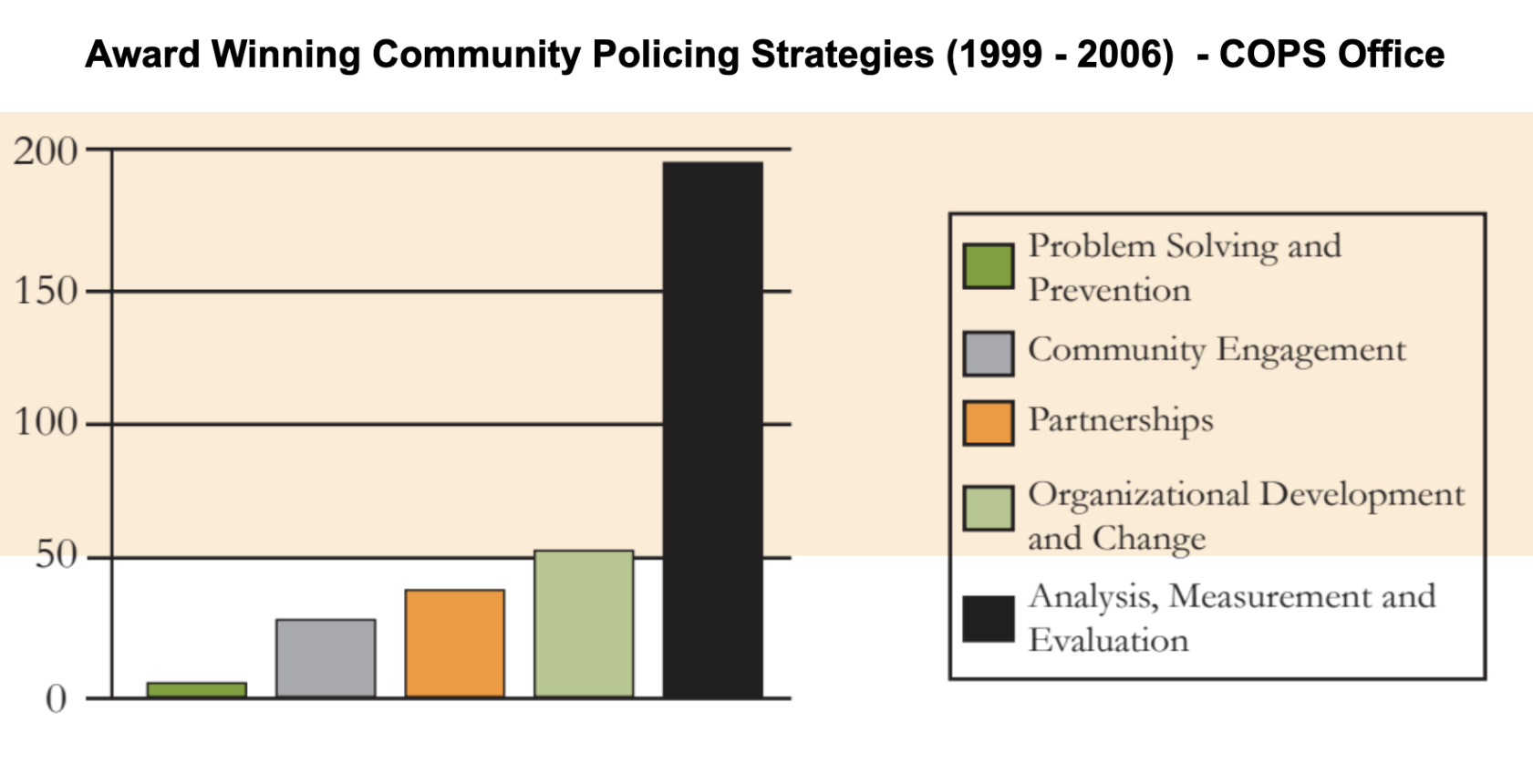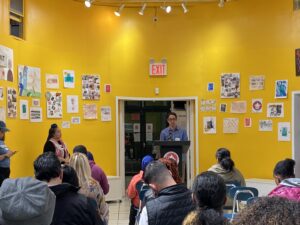Lack of Standardization
In our last piece, I discussed that despite the ubiquitousness of the term community policing, it is rather ambiguous and municipalities have failed to institutionalize the practice. Looking at the history of the New York Police Department’s (NYPD) community policing efforts, I layed out that one major barrier to institutionalization has been a lack of consistent political will. However, when political will is present, effective implementation still faces challenges. A lack of accountability around the standardization of community policing initiatives and lack of effective evaluation tools makes doing so difficult.
Even when there is political will, the policies implemented don’t always look the same. There are a few reasons for this. One is that all three components of the community policing approach are often not implemented together. Another is that one department’s implementation of a community policing component may be substantively different from another department’s due to a lack of clarity around expectations for implementation. For example, organizing a community outreach day to hand out hot dogs to the community serves a different purpose than implementing community partnership structures that can provide permanent communication channels between community members and the police. Both are designed to create community connections and build trust, but approach this task differently.
Just how different community policing efforts across the country are can be seen systematically through Community Oriented Policing Services (COPS) funded programs. COPS was originally created through the Violent Crime Control and Law Enforcement Act of 1994 to distribute grants to police departments to implement community policing initiatives. To date, COPS has invested $14 billion dollars in community policing initiatives. But what is considered to be a community policing initiative varies immensely. In 2006, COPS published a report highlighting “The most innovative approaches used by police departments from 1999 to 2006.” 97 different police departments were included in this analysis and the types of strategies they used were classified into five categories as shown below.

Clearly, departments across the country are all doing something a little bit different. And the categories that you would think would be the most prevalent based on the definition of community policing are the least frequent! While analysis, measurement, and evaluation are crucial (I will get to this later on) to effectively implement community policing models, they are a secondary requirement to the major three components of community policing: problem solving, community partnerships, and organizational change. And when you delve further into the substance of these initiatives, they look even more different from each other. For instance, partnerships can constitute relationships with the community but they can also be with public sector agencies, private sector groups, non profits, or task forces. Similarly, initiatives lumped into organizational change are broken down into seven different categories including methods like strategic planning, program and resource development, and using civilian volunteers.
Part of why these initiatives look different and vary in their level of trueness to the community policing model revolves around how they are funded. COPS is a federal entity with a federal agenda on policing. Thus, police departments that accepted federal grants, such as those provided by COPS, had a vested interest in prioritizing federal agendas such as the war on drugs and the war on terror. These agendas seeped into community policing initiatives, warping the concept of what it means to conduct community policing for many departments. For example, a 1997 study surveyed that 63% of police departments considered police paramilitary units, a strategy common in the wake of the war on drugs, an important component of community policing.
This type of relationship between federal funding and local police departments still exists today. For example, in 2021, COPS issued $139 million in funding to police departments through the Cops Hiring Program (CHP). The Department of Justice (DOJ) stated the intention of this grant was to fund the hiring and rehiring of law enforcement officers to reduce crime and advance public safety through community policing. However, the only accountability measure in place is that departments are expected to describe their community policing strategy in applications. So this funding will get more cops on the streets but it won’t necessarily facilitate the implementation of community policing programs. The DOJ reported that half of 2021 awardees would use funding to build legitimacy and trust between law enforcement and communities while others would use it to address gun violence, combat hate and domestic extremism, or support police-based responses to persons in crisis.
At the end of the day, departments across the country are implementing programs and initiatives that look nothing alike, but they are still called community policing. Moreover, departments are using federal funds intended for community policing to operate as usual. We can’t expect every program to look the same in such a large decentralized system–in fact they shouldn’t look the same because every community is different. For one community it may be more effective to build community partnerships with non-profit organizations while for another direct engagement with citizens is more effective. But loose terminology, a lack of standardization of what’s classified as community policing, and a lack of accountability means that the amount of money COPS spends on grants does not equate to institutionalizing community policing in police departments across the country.
We Can’t Measure It Right
Another major barrier to institutionalizing community policing practices on a national scale is a lack of ability to properly measure success. Take for example Mayor De Blasio’s neighborhood policing initiative, which was characterized by Police Commissioner Bratton as the start to “A new era.” We still don’t really know if it worked. In 2015, the RAND Corporation was tasked with conducting an independent evaluation to assess whether the program achieved its goals, which were stated as: “Reducing crime, improving safety and respect between the NYPD and the communities it serves, and increasing collaborative problem solving.” After experiencing COVID-19 related delays, the evaluation was expected to come out in mid-2022. There have been some other studies, but the results have not been conclusive. Some of these findings include that the program reduced misdemeanor arrests but not the racial disparities of arrests and that the program did not have an effect on crime rates. Struggles with program evaluation aren’t unique to New York City. Empirical studies of community policing have consistently found mixed and sometimes contradictory results on studied measures like impact on violent crime.
Performance measures and evaluation are not only lacking, they also fail to measure the intended impacts of community policing. For decades measurement standards for police performance have been focused on crime reduction and the volume of crime combating actions like arrests and clearances. Little emphasis has been placed on measures designed to evaluate the extent to which community policing practices impact relations between police departments and community members in communities and what the effects of these programs are on non-traditional outcomes. Instead of focusing on arrest numbers and crime rates, we should be focused on things that measure the extent to which these programs are working to improve relations. Measuring interactions such as non-enforcement contacts, which have been shown to improve attitudes toward the police, including legitimacy and willingness to cooperate, would go a long way to reveal the true benefits and implications of community policing.
It is equally important to measure if community policing is being done well. However, current standards for measuring police efficacy don’t mesh well with community policing practices. Arrest rates and crime rates don’t tell us if a community policing initiative improved communication between community members and the police, enhanced community trust and confidence in the police, or enhanced the agency and involvement of community members in solving problems that affect their quality of life.These are the things we need to be looking at to understand if community policing initiatives are doing what they are meant to do.
It’s important to adapt the right measures and evaluation systems for these programs because doing so reinforces the pressure on these programs to actually succeed. Many believe that the failure to create these kinds of systems to evaluate individual officers, units, and departments is a major barrier to a shift toward more institutionalized community policing practices. Underutilizing these types of measures and instead focusing on traditional performance measures creates little incentive for departments to implement substantive community policing programs and little incentive for individual officers to embrace community policing philosophy. When metrics for success are arrests and summons, department cultures won’t change and officers are going to be more likely to be writing tickets rather than engaging in community policing. Further, without proper evaluation, we can’t be certain whether or not community policing works to create better community-police relationships, or if community policing does work and we just aren’t doing enough of it or doing it well enough. Measuring needs to catch up, because large scale implementation can’t happen without it. In the final piece in this series, I’ll discuss recommendations for combating barriers to successful community policing. Click the link below for part three of this series.
Part Three: What Can We Do to Improve Community Policing Initiatives?
[author] [author_image timthumb=’on’]https://www.publicworkspartners.com/wp-content/uploads/2022/02/NoahBrook-2022.jpg[/author_image] [author_info]Noah is a first-year graduate student at NYU Wagner where he is specializing in policy analysis. He previously worked as a court advocate at CASES, one of the largest providers for alternatives-to-incarceration in New York City. During his undergraduate years, Noah gained direct service experience in various sectors of the criminal legal system. Upon earning his master’s degree, Noah hopes to pursue a career at the intersection of research and advocacy to promote a compassionate criminal legal system shaped by evidence-based practices and lived experiences.[/author_info] [/author]





 Public Works Partners is a WBE/DBE-certified urban planning and consulting firm. Our expertise lies in creating innovative, equitable, and sustainable solutions to complex problems.
Public Works Partners is a WBE/DBE-certified urban planning and consulting firm. Our expertise lies in creating innovative, equitable, and sustainable solutions to complex problems.